Match the columns and select the correct option .
Column−IColumn−II(a)Chondrichthyes (i)Tympanum(b)Osteichthyes(ii)Beak(c)Amphibia(iii)Operaculum(d)Reptilia(iv)Hair(e)Aves(vi)Persistent notochord(f)Mammlia(vi)Scales or scutes
(a)(b)(c)(d)(e)(f)(iii)(v)(i)(vi)(ii)(iv)
(a)(b)(c)(d)(e)(f)(v)(iii)(vi)(i)(ii)(iv)
(a)(b)(c)(d)(e)(f)(v)(iii)(i)(vi)(ii)(iv)
(a)(b)(c)(d)(e)(f)(v)(iii)(i)(vi)(iv)(ii)
The correct Answer is:C
To solve the matching question, we will analyze each group in Column-I and find their corresponding features in Column-II based on the characteristics of each class of animals.
1. Identify the Class Chondrichthyes (a):
- Chondrichthyes are characterized by having a persistent notochord, which is cartilaginous in nature.
- Match: (a) → (vi) Persistent notochord.
2. Identify the Class Osteichthyes (b):
- Osteichthyes (bony fish) are known for having an operculum, which is a bony flap covering the gills.
- Match: (b) → (iii) Operculum.
3. Identify the Class Amphibia (c):
- Amphibians typically have moist skin that may have scales or scutes, but they are not primarily known for scales. However, they do have a unique skin texture.
- Match: (c) → (vi) Scales or scutes.
4. Identify the Class Reptilia (d):
- Reptiles are characterized by having a tympanum, which is an external ear structure.
- Match: (d) → (i) Tympanum.
5. Identify the Class Aves (e):
- Birds (Aves) are distinguished by their beaks, which are adapted for their feeding habits.
- Match: (e) → (ii) Beak.
6. Identify the Class Mammalia (f):
- Mammals are characterized by having hair on their bodies, which is a defining feature of this class.
- Match: (f) → (iv) Hair.
Summary of Matches:
- (a) Chondrichthyes → (vi) Persistent notochord
- (b) Osteichthyes → (iii) Operculum
- (c) Amphibia → (vi) Scales or scutes
- (d) Reptilia → (i) Tympanum
- (e) Aves → (ii) Beak
- (f) Mammalia → (iv) Hair
Final Matching:
1. (a) → (vi)
2. (b) → (iii)
3. (c) → (vi)
4. (d) → (i)
5. (e) → (ii)
6. (f) → (iv)
Correct Option:
Based on the analysis, the correct option is the one that matches the above findings.
- Chondrichthyes are characterized by having a persistent notochord, which is cartilaginous in nature.
- Match: (a) → (vi) Persistent notochord.
- Osteichthyes (bony fish) are known for having an operculum, which is a bony flap covering the gills.
- Match: (b) → (iii) Operculum.
- Amphibians typically have moist skin that may have scales or scutes, but they are not primarily known for scales. However, they do have a unique skin texture.
- Match: (c) → (vi) Scales or scutes.
- Reptiles are characterized by having a tympanum, which is an external ear structure.
- Match: (d) → (i) Tympanum.
- Birds (Aves) are distinguished by their beaks, which are adapted for their feeding habits.
- Match: (e) → (ii) Beak.
- Mammals are characterized by having hair on their bodies, which is a defining feature of this class.
- Match: (f) → (iv) Hair.
- (a) Chondrichthyes → (vi) Persistent notochord
- (b) Osteichthyes → (iii) Operculum
- (c) Amphibia → (vi) Scales or scutes
- (d) Reptilia → (i) Tympanum
- (e) Aves → (ii) Beak
- (f) Mammalia → (iv) Hair
1. (a) → (vi)
2. (b) → (iii)
3. (c) → (vi)
4. (d) → (i)
5. (e) → (ii)
6. (f) → (iv)
Based on the analysis, the correct option is the one that matches the above findings.
Topper's Solved these Questions
- ANIMAL KINGDOM BOOK - AAKASH SERIESCHAPTER - ANIMAL KINGDOM EXERCISE - EXERCISE -III (Previous AIPMT/NEET Questions)
35 Videos
- ANIMAL KINGDOM BOOK - AAKASH SERIESCHAPTER - ANIMAL KINGDOM EXERCISE - EXERCISE -II (MAMMALIA)
21 Videos
- BIODIVERSITY AND CONSERVATIONBOOK - AAKASH SERIESCHAPTER - BIODIVERSITY AND CONSERVATIONEXERCISE - EXERCISE-II India - A major Source of Biodiversity and its Preservation
2 Videos
Similar Questions
Match the column I,II,and III .Select the correct option :

View SolutionMatch column I with column II and select the correct option.
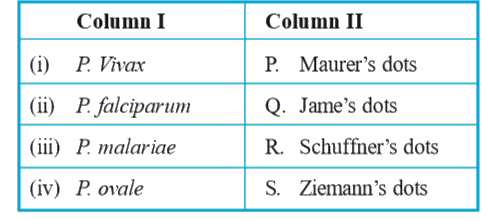
View SolutionMatch column I with column II and select the correct option.

View SolutionMatch column -I with column-II and select the correct option :-

View SolutionMatch the column-I with column-II and select the correct option :
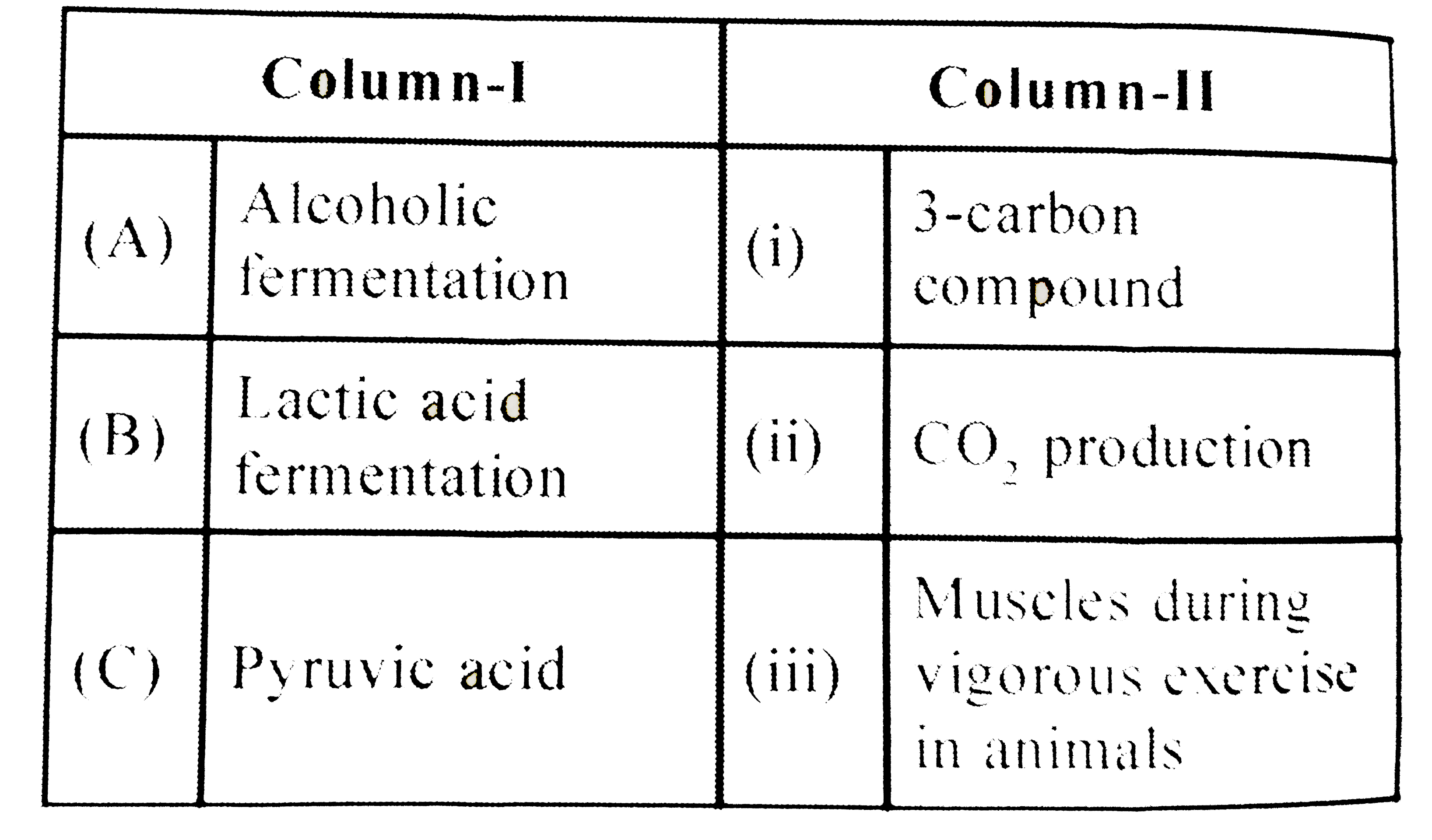
View SolutionMatch the column-I with column -II and select the correct option :
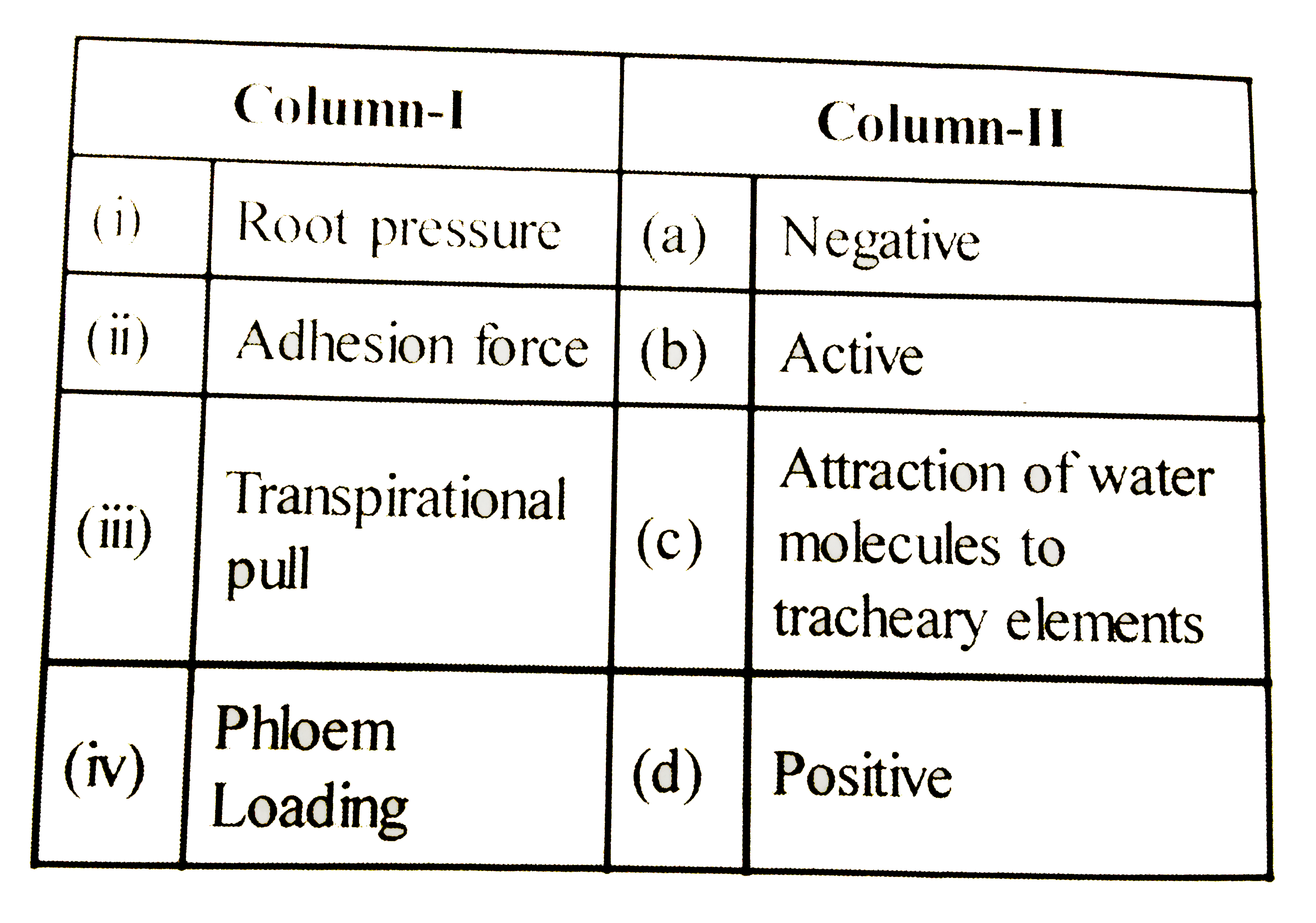
View SolutionMatch the column I with column II and select the correct option
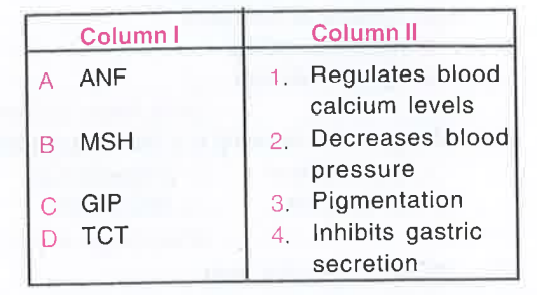
View SolutionMatch the terms column-I with column-II and select the correct option
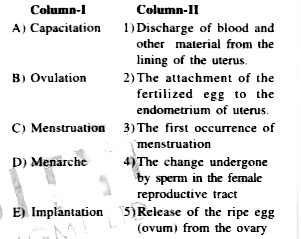
View SolutionMatch the terms column-I with column-II and select the correct option
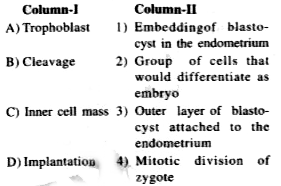
View SolutionMatch the columns and select the correct option.
ColumnIColumnIIA.Octopus(i)LimbsB.Crocodile(ii)Comb platesC.Catla(iii)ArmsD.Ctenoplane(iv)Fins
View Solution
